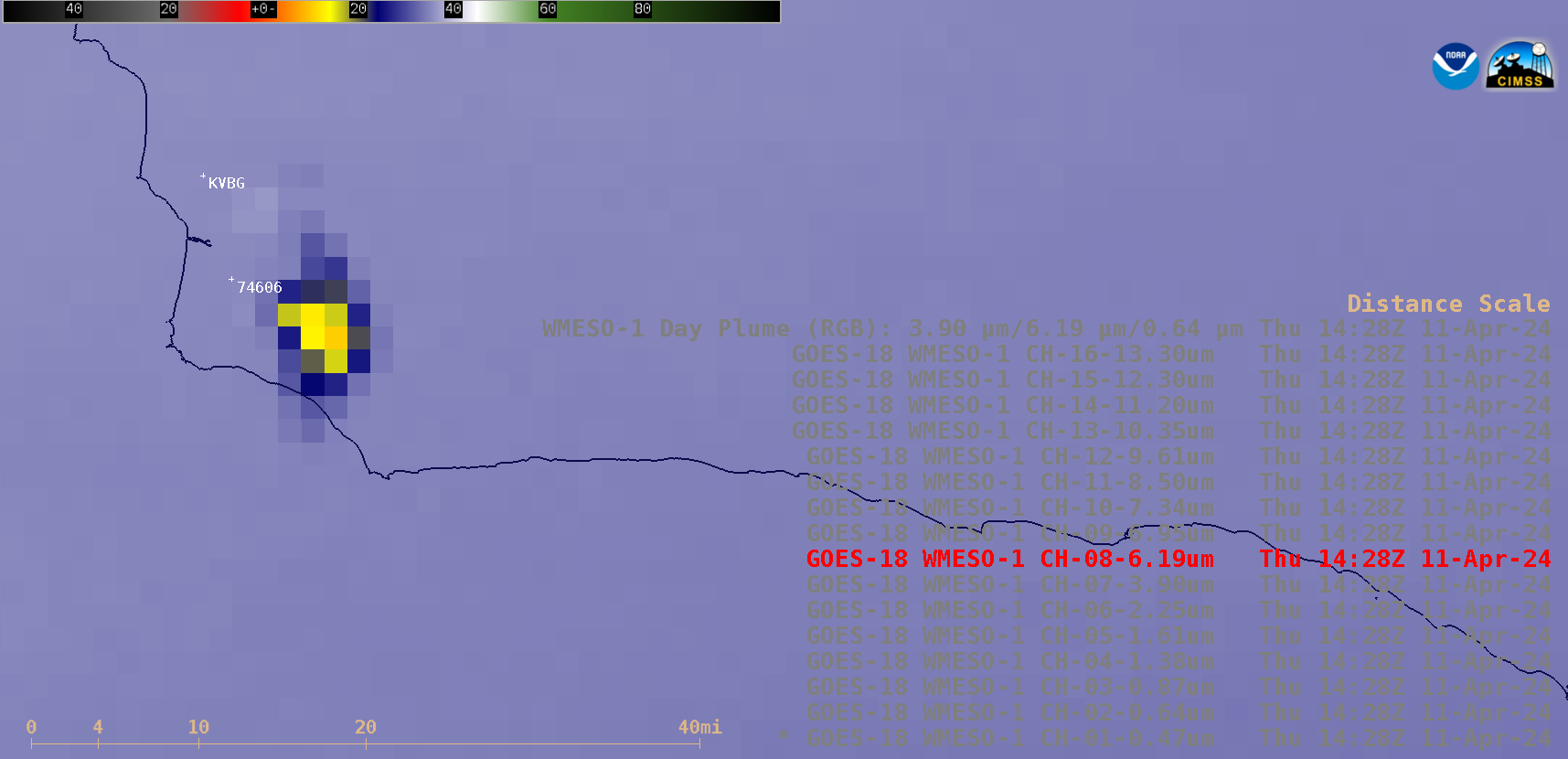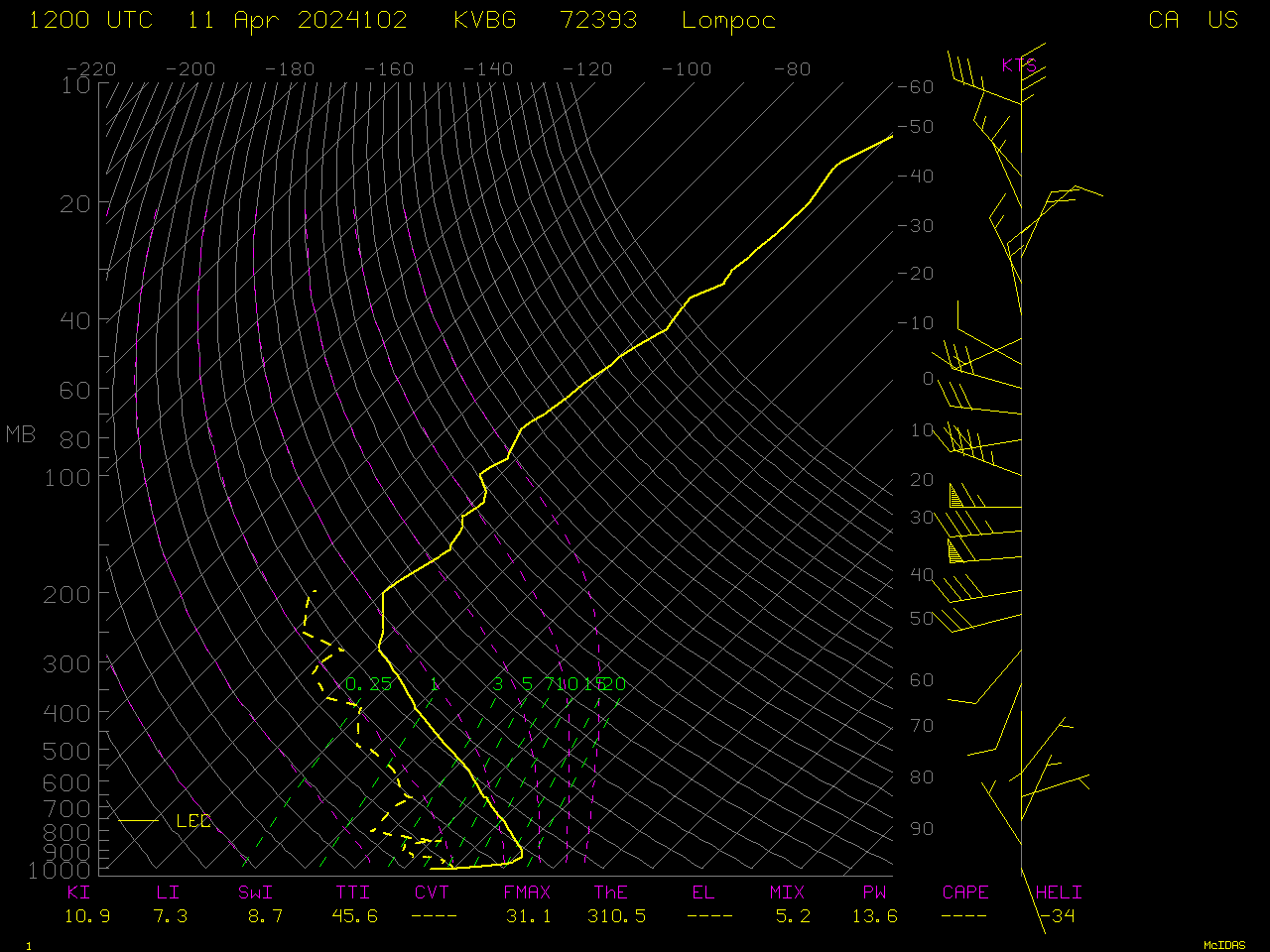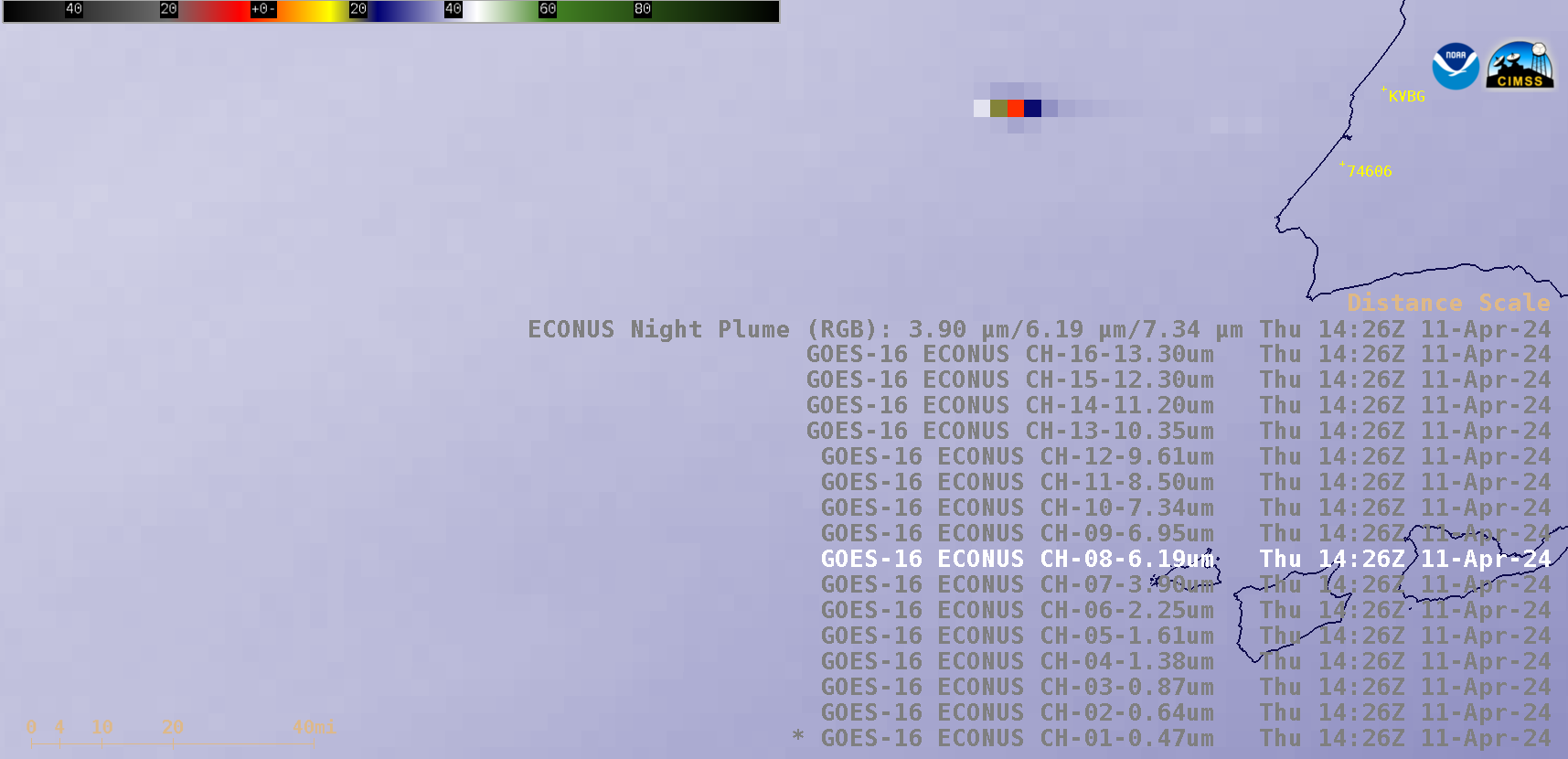Satellite signatures of the SpaceX USSF-68 Mission launch

1-minute GOES-18 images of ABI spectral bands 01-16 and a Rocket Plume RGB, from 1424-1435 UTC on 11 April [click to play animated GIF | MP4]
1-minute Mesoscale Domain Sector GOES-18 (GOES-West) images from all 16 of the ABI spectral bands — in addition to a Rocket Plume RGB (above) displayed signatures of the SpaceX USSF-62 Mission (to deploy the new WSF-M satellite) Falcon 9 rocket that was launched from Vandenberg Space Force Base, California at 1425 UTC on 11 April 2024. A warm thermal signature of the Stage 1 rocket booster was evident in images from all of the Near-Infrared and Infrared spectral bands (Bands 03-16) and the RGB imagery as it quickly moved east-northward from the launch site — and either a somewhat-bright reflectance signature or a relatively cool thermal signature of the Stage 1 rocket booster’s condensation cloud was seen in most of the spectral bands as it drifted slowly eastward from the launch site (evaporating quickly in the dry atmosphere).
In addition, a warm thermal signature of the Stage 1 rocket re-entry burn was apparent at 1431 UTC (just northeast of Vandenberg KVBG) to begin slowing its descent in order to make a landing back at Vandenberg.
One interesting aspect seen in Upper-level Water Vapor (Band 08) and Rocket Plume RGB images after Stage 2 rocket booster ignition (which occurred around 1427 UTC — at that time, the peak 3.9 µm infrared brightness temperature reached 71.81ºC — was the rapid southward expansion of the water-vapor-rich rocket plume. A plot of rawinsonde data from Vandenberg, California (below) showed that the high-altitude transition to general northerly flow began at altitudes of 20-30 km (the 40 hPa pressure level and above).

Plot of rawinsonde data from Vandenberg, California at 1200 UTC on 11 April [click to enlarge]
With GOES-16 (GOES-East) images (below), although the satellite viewing angle was larger (62.34 degrees, vs 43.82 degrees for GOES-18), similar rocket signatures were observed in many of the ABI spectral bands and the RGB — albeit displaced to the west, due to parallax associated with the high-altitude features.

5-minute GOES-16 images of ABI spectral bands 01-16 and a Rocket Plume RGB, from 1421-1431 UTC on 11 April [click to play animated GIF | MP4]
—————
Free Secure Email – Transcom Sigma
Transcom Hosting
Transcom Premium Domains
